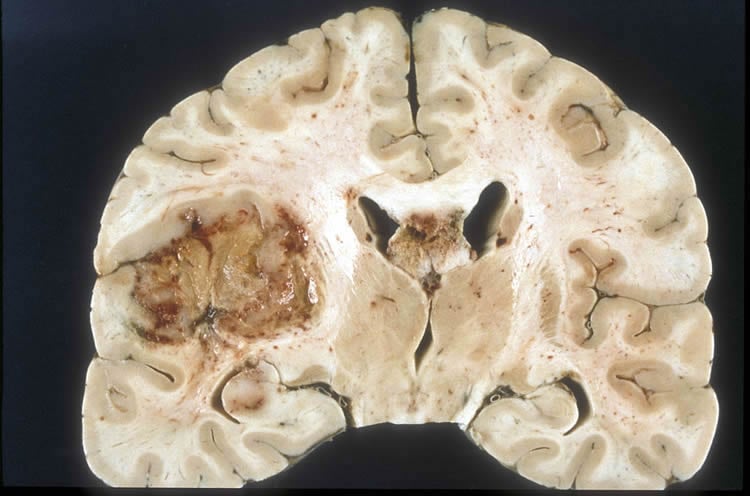Summary: A new study reports researchers have identified a group of immune system genes that could play a role in how long people live after developing glioblastoma.
Source: AAN.
Researchers have identified a group of immune system genes that may play a role in how long people can live after developing a common type of brain cancer called glioblastoma multiforme, a tumor of the glial cells in the brain. The research is published in the May 25, 2016, online issue of Neurology.
People with these fast-growing tumors live an average of less than two years, even after treatment with surgery, radiation and chemotherapy.
“We’ve had luck with other types of cancer in removing the brakes on the immune system to allow it to fight the tumors, but this has not been the case with glioblastoma,” said study author Anhua Wu, MD, PhD, of the First Hospital of China Medical University in Shenyang, China. “If our discovery of these genes is validated in other studies, we could use this ‘gene signature’ to determine the best treatments or path of treatment.”
For the study, researchers investigated tissue samples from 297 people with brain tumors. Of the 297, 127 people had glioblastoma and 170 had a lower grade glioma, which is also a tumor of glial cells, but less aggressive than glioblastoma. Researchers analyzed the 322 immune-related genes through genome sequencing. Of the 322 genes, eight genes played a role in glioblastoma. Three of the genes were protective against glioblastoma and five increased the risk of earlier death. An eight-gene-based risk signature was established for risk stratification. People who were indicated as high risk cases were more likely to die earlier than people with low risk. The eight-gene signature was also compatible for people with lower grade glioma.
The people with glioblastoma were divided into two groups based on the eight-gene-based risk signature, or high and low risk. Those with high risk were twice as likely to have a shorter survival time after their diagnosis as those with low risk. The high-risk group lived an average of 348 days after diagnosis, compared to 493 days for the low-risk group. They also were nearly twice as likely to have a shorter length of time between diagnosis and the first sign that the tumor was getting worse. The high-risk group had 242 days before the disease got worse, compared to 369 days for the low-risk group.

The results were the same after researchers adjusted for other factors that could affect how long people lived, such as what type of treatment they received.
The researchers also analyzed an independent database of 536 glioblastoma samples and found the same signature of eight genes in those cases.
“The looming question in brain cancer research today is whether the launch of immunotherapy will help control an uncontrollable disease,” said Rifaat Bashir, MD, a retired neurologist in Reston, Virginia and a Fellow of the American Academy of Neurology and the American Neurological Association, who wrote an accompanying editorial. “While this study does not answer this question, it brings us one step closer to believing that one day we will be able to exploit the immune system to better treat glioblastoma.”
Funding: The study was supported by the Chinese National High Technology Research and Development Program, the Chinese National Natural Science Foundation, and the Liaoning Province Science and Technology Department.
Source: Rachel Seroka – AAN
Image Source: This NeuroscienceNews.com image is in the public domain.
Original Research: The study will appear in Neurology.
[cbtabs][cbtab title=”MLA”]AAN. “Immune System Genes Tied to Glioblastoma Brain Cacer Identified.” NeuroscienceNews. NeuroscienceNews, 25 May 2016.
<https://neurosciencenews.com/immune-genes-glioblstoma-cancer-4306/>.[/cbtab][cbtab title=”APA”]AAN. (2016, May 25). Immune System Genes Tied to Glioblastoma Brain Cacer Identified. NeuroscienceNews. Retrieved May 25, 2016 from https://neurosciencenews.com/immune-genes-glioblstoma-cancer-4306/[/cbtab][cbtab title=”Chicago”]AAN. “Immune System Genes Tied to Glioblastoma Brain Cacer Identified.” https://neurosciencenews.com/immune-genes-glioblstoma-cancer-4306/ (accessed May 25, 2016).[/cbtab][/cbtabs]






